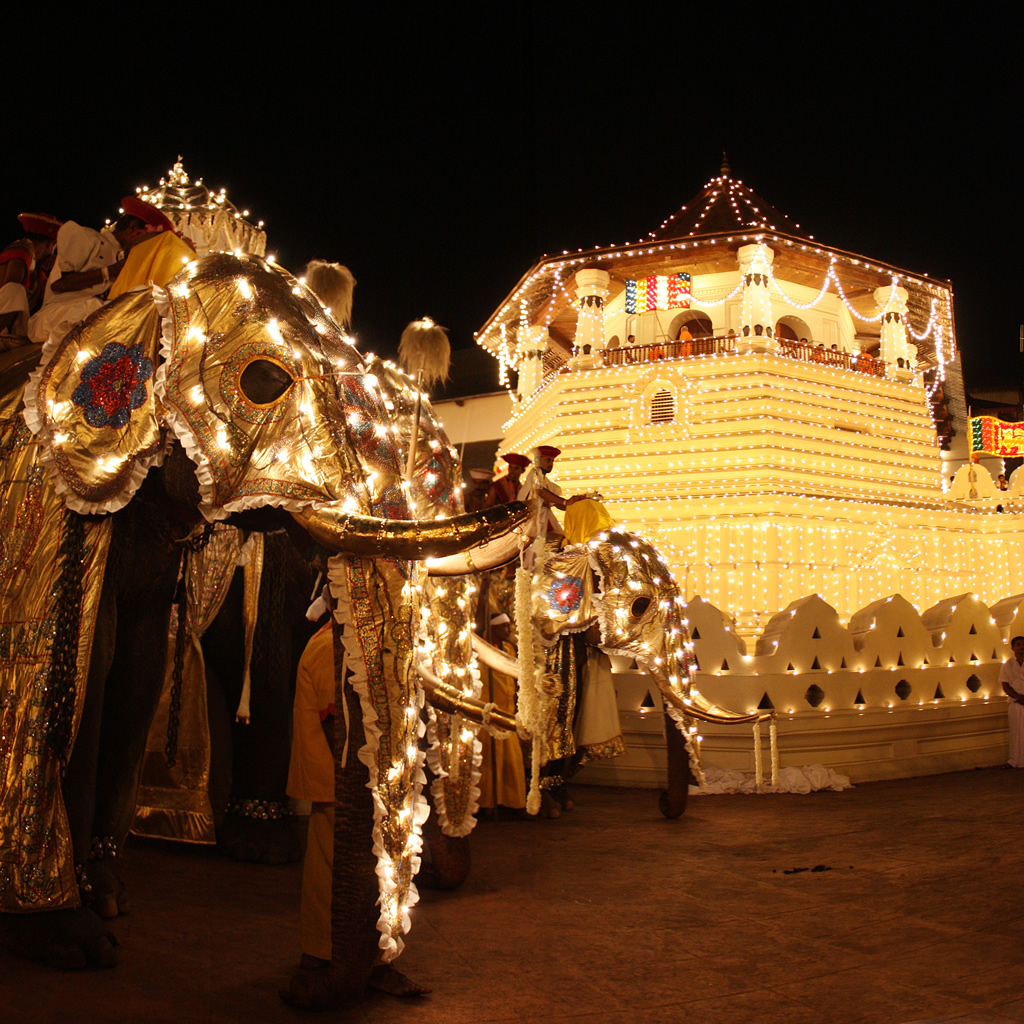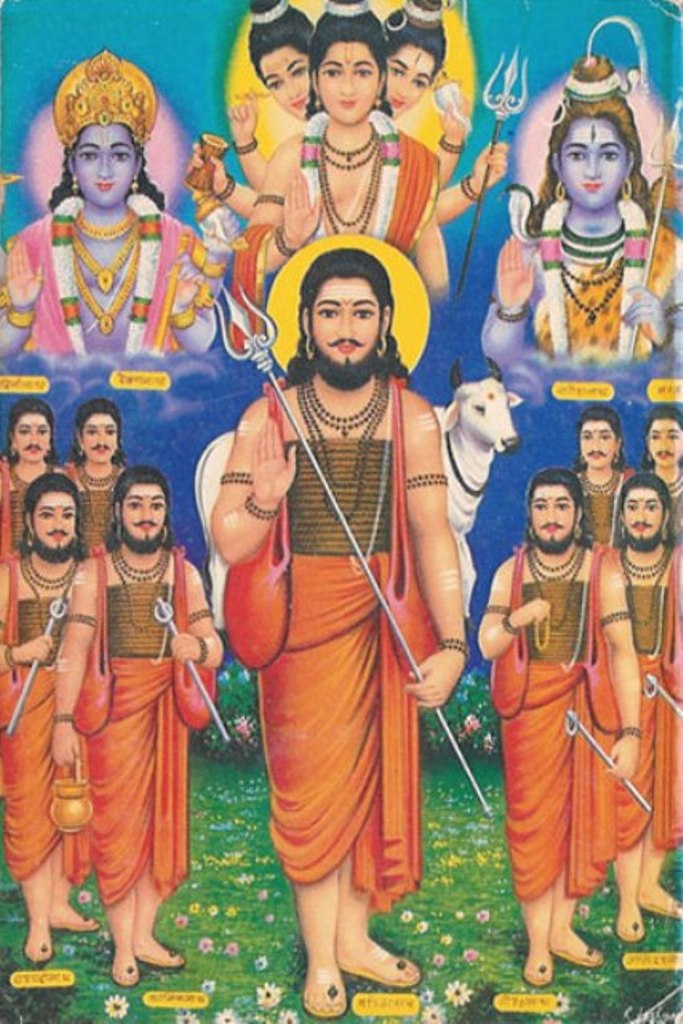|
Kandy Esala Perahera
The Kandy Esala Perahera (the Sri Dalada Perahara procession of Kandy) also known as The Festival of the Tooth is a festival held in July and August in Kandy, Sri Lanka. This historical procession is held annually to pay homage to the Sacred Tooth Relic of Buddha housed at the Sri Dalada Maligawa in Kandy. A unique symbol of Sri Lanka, the procession consists of traditional local dances such as fire dances and performances in whip-dance garments. The festival ends with the traditional ''Diya-kepeema'' ritual, a water cutting ceremony which is held at the Mahaweli River at Getambe, Kandy. History The Esala is believed to be a fusion of two separate but interconnected "''Peraheras''" (Processions) – The '' Esala'' and '' Dalada''. The Esala Perahera, which is thought to date back to the 3rd century BC, was a ritual enacted to request the gods for rainfall. The Dalada Perahera is believed to have begun when the Sacred Tooth Relic of Lord Buddha was brought to Sri Lanka fr ... [...More Info...] [...Related Items...] OR: [Wikipedia] [Google] [Baidu] |
Sangha
Sangha or saṃgha () is a term meaning "association", "assembly", "company" or "community". In a political context, it was historically used to denote a governing assembly in a republic or a kingdom, and for a long time, it has been used by religious associations, including Buddhists, Jains and Sikhs. Given this history, some Buddhists have stated that the tradition of the ''sangha'' represents humanity's oldest surviving democratic institution. In Buddhism, ''sangha'' refers to the monastic communities of ''bhikkhu'' (monks) and '' bhikkhuni'' (nuns). These communities are traditionally referred to as the ''bhikkhu-sangha'' or the ''bhikkhuni-sangha''. As a separate category, those Buddhists who have attained any of the four stages of enlightenment, whether or not they are members of the monastic community, are referred to as the ''āryasaṅgha'' ("noble Sangha"). According to the Theravada school and Nichiren Shoshu Buddhism, the term ''sangha'' does not refer to ... [...More Info...] [...Related Items...] OR: [Wikipedia] [Google] [Baidu] |
Kataragama Deviyo
Kataragama ( , ) is a pilgrimage town sacred to Buddhist, Hindu and indigenous Vedda people of Sri Lanka. People from South India also go there to worship. The town has the Kataragama temple, a shrine dedicated to Skanda Kumara also known as Kataragama deviyo. Kataragama is located in the Monaragala District of Uva province, Sri Lanka. It is southeast of Colombo. Although Kataragama was a small village in medieval times, today it is a fast-developing township surrounded by jungle in the southeastern region of Sri Lanka. The ancient Kiri Vehera Buddhist stupa, which is believed to be built by the regional king Mahasena in the 6th century BC is also a major attraction in Kataragama area. The town has a venerable history dating back to the last centuries BCE. It was the seat of government of many Sinhalese kings during the days of Rohana kingdom. Since the 1950s the town has undergone many improvements with successive governments investing in public transportation, medical ... [...More Info...] [...Related Items...] OR: [Wikipedia] [Google] [Baidu] |
Esala Perahera (Procession) 2006, Kandy, Sri Lanka
The Kandy Esala Perahera (the Sri Dalada Perahara procession of Kandy) also known as The Festival of the Tooth is a festival held in July and August in Kandy, Sri Lanka. This historical procession is held annually to pay homage to the Sacred Tooth Relic of Buddha housed at the Sri Dalada Maligawa in Kandy. A unique symbol of Sri Lanka, the procession consists of traditional local dances such as fire dances and performances in whip-dance garments. The festival ends with the traditional ''Diya-kepeema'' ritual, a water cutting ceremony which is held at the Mahaweli River at Getambe, Kandy. History The Esala is believed to be a fusion of two separate but interconnected "''Peraheras''" (Processions) – The ''Esala'' and '' Dalada''. The Esala Perahera, which is thought to date back to the 3rd century BC, was a ritual enacted to request the gods for rainfall. The Dalada Perahera is believed to have begun when the Sacred Tooth Relic of Lord Buddha was brought to Sri Lanka from I ... [...More Info...] [...Related Items...] OR: [Wikipedia] [Google] [Baidu] |
Elephant
Elephants are the largest living land animals. Three living species are currently recognised: the African bush elephant ('' Loxodonta africana''), the African forest elephant (''L. cyclotis''), and the Asian elephant ('' Elephas maximus''). They are the only surviving members of the family Elephantidae and the order Proboscidea; extinct relatives include mammoths and mastodons. Distinctive features of elephants include a long proboscis called a trunk, tusks, large ear flaps, pillar-like legs, and tough but sensitive grey skin. The trunk is prehensile, bringing food and water to the mouth and grasping objects. Tusks, which are derived from the incisor teeth, serve both as weapons and as tools for moving objects and digging. The large ear flaps assist in maintaining a constant body temperature as well as in communication. African elephants have larger ears and concave backs, whereas Asian elephants have smaller ears and convex or level backs. Elephants are scatter ... [...More Info...] [...Related Items...] OR: [Wikipedia] [Google] [Baidu] |
Elephants Of Kandy Esala Perahera (2)
Elephants are the largest living land animals. Three living species are currently recognised: the African bush elephant ('' Loxodonta africana''), the African forest elephant (''L. cyclotis''), and the Asian elephant (''Elephas maximus''). They are the only surviving members of the family Elephantidae and the order Proboscidea; extinct relatives include mammoths and mastodons. Distinctive features of elephants include a long proboscis called a trunk, tusks, large ear flaps, pillar-like legs, and tough but sensitive grey skin. The trunk is prehensile, bringing food and water to the mouth and grasping objects. Tusks, which are derived from the incisor teeth, serve both as weapons and as tools for moving objects and digging. The large ear flaps assist in maintaining a constant body temperature as well as in communication. African elephants have larger ears and concave backs, whereas Asian elephants have smaller ears and convex or level backs. Elephants are scattered throughout ... [...More Info...] [...Related Items...] OR: [Wikipedia] [Google] [Baidu] |
Temple Of The Tooth
Sri Dalada Maligawa, commonly known in English as the Temple of the Sacred Tooth Relic, is a Buddhist temple in Kandy, Sri Lanka. It is located in the Royal Palace Complex of the former Kingdom of Kandy, which houses the relic of the tooth of the Buddha. Since ancient times, the relic has played an important role in local politics because it is believed that whoever holds the relic holds the governance of the country. The relic was historically held by Sinhalese kings. The Temple of the Tooth is a World Heritage Site mainly due to the temple and the relic. Bhikkhus of two particular chapters, the Malwathu chapter and the Asgiri chapter, conduct daily worship in the inner chamber of the temple. Rituals are performed three times daily: at dawn, at noon and in the evenings. On Wednesdays, there is a symbolic bathing of the relic with a herbal preparation made from scented water and fragrant flowers called ''Nanumura Mangallaya''; this holy water is believed to contain healing p ... [...More Info...] [...Related Items...] OR: [Wikipedia] [Google] [Baidu] |
Kandy Dancers
Kandy (, ; , ) is a major city located in the Central Province of Sri Lanka. It was the last capital of the Sinhalese monarchy from 1469 to 1818, under the Kingdom of Kandy. The city is situated in the midst of hills in the Kandy plateau, which crosses an area of tropical plantations, mainly tea. Kandy is both an administrative and religious city and the capital of the Central Province. Kandy is the home of the Temple of the Tooth Relic (''Sri Dalada Maligawa''), one of the most sacred places of worship in the Buddhist world. It was declared a World Heritage Site by UNESCO in 1988. Historically the local Buddhist rulers resisted Portuguese, Dutch, and British colonial expansion and occupation. Etymology The city and the region have been known by many different names and versions of those names. Some scholars suggest that the original name of Kandy was Katubulu Nuwara located near the present Watapuluwa. However, the more popular historical name is Senkadagala or Senkadaga ... [...More Info...] [...Related Items...] OR: [Wikipedia] [Google] [Baidu] |
Pattini
Pattini (, ) is considered a guardian deity of Sri Lanka in both Sri Lankan Buddhism and Sinhalese people, Sinhalese folklore. She is also worshipped by Hinduism in Sri Lanka, Sri Lankan Tamil Hindus under the name Kannaki Amman. Pattini is regarded as the patron goddess of fertility and health, especially as a protector against smallpox, which is referred to in Sinhala language, Sinhala as ''deviyange ledé'' ("the divine affliction"). History Goddess Pattini is the deified form of Kannaki, the central character of the Tamil epic ''Cilappatikaram'', composed by Ilango Adigal in south India after the 2nd century CE. The worship of Pattini was introduced to Sri Lanka shortly thereafter, where it absorbed earlier local deities such as Kiri Amma ("the Milk Mother"). Historians attribute the introduction of Goddess Pattini to Gajabahu I, a Sinhalese ruler who reigned in Sri Lanka from 113 to 135 CE. According to some historians, the ''Cilappatikaram'' mentions Gajabahu's presence ... [...More Info...] [...Related Items...] OR: [Wikipedia] [Google] [Baidu] |
Katharagama
Kataragama ( , ) is a pilgrimage town sacred to Buddhist, Hindu and indigenous Vedda people of Sri Lanka. People from South India also go there to worship. The town has the Kataragama temple, a shrine dedicated to Skanda Kumara also known as Kataragama deviyo. Kataragama is located in the Monaragala District of Uva province, Sri Lanka. It is southeast of Colombo. Although Kataragama was a small village in medieval times, today it is a fast-developing township surrounded by jungle in the southeastern region of Sri Lanka. The ancient Kiri Vehera Buddhist stupa, which is believed to be built by the regional king Mahasena in the 6th century BC is also a major attraction in Kataragama area. The town has a venerable history dating back to the last centuries BCE. It was the seat of government of many Sinhalese kings during the days of Rohana kingdom. Since the 1950s the town has undergone many improvements with successive governments investing in public transportation, medical faci ... [...More Info...] [...Related Items...] OR: [Wikipedia] [Google] [Baidu] |
Vishnu
Vishnu (; , , ), also known as Narayana and Hari, is one of the Hindu deities, principal deities of Hinduism. He is the supreme being within Vaishnavism, one of the major traditions within contemporary Hinduism, and the god of preservation (sattva). Vishnu is known as ''The Preserver'' within the Trimurti, the triple deity of Para Brahman, supreme divinity that includes Brahma and Shiva.Gavin Flood, An Introduction to Hinduism' () (1996), p. 17. In Vaishnavism, Vishnu is the supreme Lord who creates, protects, and transforms the Hindu cosmology, universe. Tridevi is stated to be the energy and creative power (Shakti) of each, with Lakshmi being the equal complementary partner of Vishnu. He is one of the five equivalent deities in Panchayatana puja of the Smarta tradition of Hinduism. According to Vaishnavism, the supreme being is with qualities (Saguna Brahman, Saguna), and has definite form, but is limitless, transcendent and unchanging absolute Brahman, and the primal Atma ... [...More Info...] [...Related Items...] OR: [Wikipedia] [Google] [Baidu] |
Natha (other)
Natha, also called Nath (), are a Shaiva sub-tradition within Hinduism in India and Nepal. A medieval movement, it combined ideas from Buddhism, Shaivism, Tantra and Yoga traditions of the Indian subcontinent.Natha: Indian religious sect Encyclopedia Britannica (2007) The Naths have been a confederation of devotees who consider as their first lord or , with varying lists of additional gurus. Of these, the 9th or 10th century |










